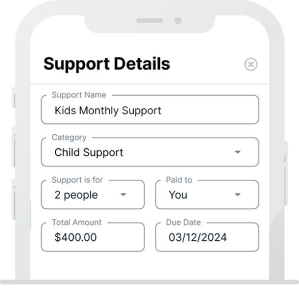
Mastering Parallel Parenting: A Guide to Thriving After Divorce
Embracing a New Chapter: The Power of Parallel Parenting
Divorce can be a stormy journey, not just for the couple involved but significantly for the children caught in the crossfire. Amidst the challenges, parallel parenting emerges as a beacon of hope, offering a structured yet flexible framework for co-parents striving to raise their children in a harmonious environment post-divorce. This guide delves into the essence of parallel parenting, shedding light on its definition, benefits, and practical tips for implementation. Through understanding and adopting parallel parenting, parents can navigate the complexities of post-divorce life, ensuring their children receive the love, care, and stability they deserve. Let’s explore how this approach can transform challenges into opportunities for growth and positive change.
Article Outline
- What is Parallel Parenting?
- The Unique Benefits of Parallel Parenting
- Crafting a Comprehensive Parallel Parenting Plan
- Communication Strategies for Parallel Parents
- Setting Boundaries: The Cornerstone of Parallel Parenting
- Co-parenting vs. Parallel Parenting: Understanding the Differences
- Tips for Successful Parallel Parenting
- Dealing with Conflict in a Parallel Parenting Arrangement
- Parallel Parenting and the Legal Landscape
- The Future of Parallel Parenting: Trends and Predictions
What is Parallel Parenting?
Parallel parenting is a unique approach designed for parents who are navigating the challenges of co-parenting post-divorce, especially in high-conflict situations. This method emphasizes minimal direct interaction between parents, relying instead on detailed parenting plans that outline schedules, responsibilities, and communication methods about the child’s upbringing. By reducing the need for face-to-face communication, parallel parenting minimizes conflict and stress, allowing parents to focus on providing a stable, loving environment for their children. It’s an effective strategy that respects the boundaries of each parent while ensuring that the child’s welfare remains the top priority.
The Unique Benefits of Parallel Parenting
Co-parenting, when executed effectively, offers a myriad of unique benefits that greatly contribute to a child’s well-being and development. By fostering a cooperative relationship between divorced or separated parents, co-parenting ensures that children continue to receive love, guidance, and support from both parents in a unified manner. This approach minimizes the emotional stress children might experience during parental separation, as they see their parents working together harmoniously. Moreover, co-parenting models healthy communication and conflict resolution skills, teaching children valuable life lessons in empathy, teamwork, and resilience. The consistency in rules and parenting styles across two homes provides a stable and secure environment, crucial for the child’s emotional and psychological growth. Ultimately, co-parenting nurtures a sense of belonging and security in children, reinforcing the idea that they are a priority in their parents’ lives despite the changes in family dynamics.
Crafting a Comprehensive Parallel Parenting Plan
Crafting a comprehensive parallel parenting plan is a critical step for parents embarking on the journey of parallel parenting, especially in the aftermath of a high-conflict divorce. This plan serves as a blueprint for the entire parenting arrangement, detailing everything from daily routines to decision-making protocols concerning the child’s upbringing. A well-designed plan should meticulously outline custody schedules, financial responsibilities, educational decisions, healthcare provisions, and methods for conflict resolution. It also includes communication guidelines that specify how parents will exchange information about their child, often through indirect methods like email or specialized apps, to minimize direct contact and potential conflicts. By addressing these aspects with clarity and precision, the parallel parenting plan fosters a structured environment where children can thrive, ensuring their needs are met with consistency and care, despite the challenges in the parental relationship. This document not only helps in reducing misunderstandings but also in providing a sense of stability and security for the child, which is paramount in their development and well-being.
Communication Strategies for Parallel Parents
For parallel parents, mastering effective communication strategies is essential to navigate the complexities of co-parenting with minimal conflict. The cornerstone of these strategies is to maintain clear, concise, and respectful communication, focusing solely on the child’s needs and well-being. To facilitate this, parents often resort to written forms of communication, such as emails, texts, or dedicated co-parenting apps, which provide a record of exchanges and help avoid misunderstandings. These tools allow parents to share important information about the child’s health, education, and activities without the need for direct interaction, thereby reducing the potential for conflict. It’s also crucial for parallel parents to agree on a communication protocol that outlines the frequency, mode, and acceptable topics of conversation, ensuring that all discussions are purposeful and centered around the child. By implementing these communication strategies, parallel parents can create a stable and supportive environment for their child, despite the challenges in their own relationship.
Setting Boundaries: The Cornerstone of Parallel Parenting
Establishing and respecting boundaries is key in parallel parenting. These boundaries help manage interactions, ensuring they remain focused on the child’s needs. It provides a foundation for a respectful and functional co-parenting relationship despite underlying conflicts. These boundaries delineate the expectations and limitations around communication, parental responsibilities, and personal space, ensuring that interactions remain focused on the child’s well-being. By establishing clear guidelines on how and when parents will communicate, the topics that are appropriate for discussion, and the decision-making processes regarding the child’s life, parallel parenting creates a structured environment that minimizes stress and conflict. Additionally, boundaries help in maintaining each parent’s autonomy in their household while co-managing parenting duties, allowing for consistency and stability in the child’s life across both homes. Effective boundary-setting fosters a sense of respect and cooperation, enabling parents to navigate their shared parenting responsibilities smoothly and ensuring that the child’s needs are met in a healthy, supportive manner.
Co-parenting vs. Parallel Parenting: Understanding the Differences
While co-parenting involves a high degree of cooperation and communication, parallel parenting is suited for situations where such interaction is challenging. Co-parenting and parallel parenting are two distinct approaches to raising children after separation or divorce, each suited to different levels of parental conflict and cooperation. Co-parenting is characterized by a high degree of collaboration, open communication, and flexibility between parents, who work together closely in making decisions and raising their children even after parting ways. This approach requires both parents to maintain a healthy relationship, regularly discuss parenting issues, and often participate in joint activities with their child. On the other hand, parallel parenting is designed for situations where conflict is high, and cooperative communication is challenging. In parallel parenting, parents minimize direct interaction, relying instead on structured plans and indirect communication methods to manage their parenting responsibilities. While both parents remain actively involved in their child’s life, they do so independently to reduce conflict exposure to the child. Understanding these differences is crucial for parents to choose the approach that best supports their child’s well-being, considering their unique circumstances and relationship dynamics.
Tips for Successful Parallel Parenting
Successful parallel parenting requires meticulous planning, clear communication, and a steadfast commitment to the child’s well-being above all. Key tips include creating a detailed parenting plan that covers schedules, healthcare decisions, and educational arrangements, ensuring both parents are on the same page. Utilizing neutral communication tools, such as email or specialized apps, helps maintain focused discussions on the child’s needs while minimizing conflict. Establishing and respecting clear boundaries around communication and parenting responsibilities is crucial, as is the commitment to keep any disagreements away from the child. Flexibility and adaptability are important, allowing the parenting plan to evolve as the child grows and their needs change. Lastly, prioritizing self-care and seeking support from professionals or support groups can provide the resilience needed to navigate the challenges of parallel parenting effectively.
Dealing with Conflict in a Parallel Parenting Arrangement
Dealing with conflict in a parallel parenting arrangement requires a strategic and composed approach to ensure the well-being of the child remains the priority. Key to managing disagreements is adhering strictly to the parenting plan, which acts as a pre-agreed guideline for resolving issues as they arise. Utilizing neutral communication methods, such as emails or co-parenting apps, can help prevent conflicts from escalating by keeping interactions focused and documented. It’s also beneficial to engage in conflict resolution techniques, like mediation or counselling, when disputes cannot be resolved independently. Importantly, parents should shield their child from any conflict, ensuring that disagreements are handled away from the child’s view to maintain a sense of security and stability in their lives. By focusing on constructive solutions and the child’s best interests, parents can navigate conflicts more effectively within a parallel parenting framework.
Parallel Parenting and the Legal Landscape
Navigating the legal landscape is a critical aspect of establishing a successful parallel parenting arrangement. This process often involves formalizing the parenting plan through court orders to ensure both parents adhere to agreed-upon guidelines and schedules. Legal intervention may be necessary to address and enforce matters related to custody, support, and decision-making rights, providing a structured framework within which parents can operate. Engaging legal professionals can offer guidance, ensuring the parenting plan is comprehensive, fair, and in the best interests of the child. Additionally, understanding local laws and regulations that govern parental rights and responsibilities is crucial. This legal framework supports the parallel parenting structure, helping to mitigate conflicts and protect the welfare of the child, thereby ensuring a stable and secure environment for their growth and development.
The Future of Parallel Parenting: Trends and Predictions
The future of parallel parenting is likely to see significant evolution, driven by technological advancements and a growing recognition of its benefits in protecting children’s well-being in high-conflict situations. We can anticipate the development of more sophisticated co-parenting apps and online platforms that facilitate communication, scheduling, and conflict resolution between parents, making it easier to maintain the necessary boundaries while ensuring the child’s needs are met. Additionally, legal systems may adapt to better support and formalize parallel parenting arrangements, offering clearer guidelines and resources for families navigating this pathway. As society continues to recognize the diversity of family structures and the importance of addressing the unique challenges they face, parallel parenting will become a more prominent and supported option for ensuring the healthy development of children post-divorce.
Key Takeaways
- Parallel parenting offers a structured approach to co-parenting in high-conflict situations, prioritizing the child’s well-being.
- A detailed parenting plan is essential, covering all aspects of the child’s life and specifying communication methods.
- Effective communication and clear boundaries are crucial for reducing conflict and maintaining a healthy environment for the child.
- Parallel parenting differs from co-parenting by minimizing direct contact between parents while still ensuring both are actively involved in their child’s life.
- Adapting to changes, seeking support, and staying informed about legal aspects can enhance the effectiveness of parallel parenting arrangements.
Embracing parallel parenting can be a transformative journey, turning the challenges of divorce into opportunities for creating a stable and loving environment for children. By focusing on structure, communication, and the child’s best interests, parents can navigate the complexities of co-parenting with grace and resilience.









